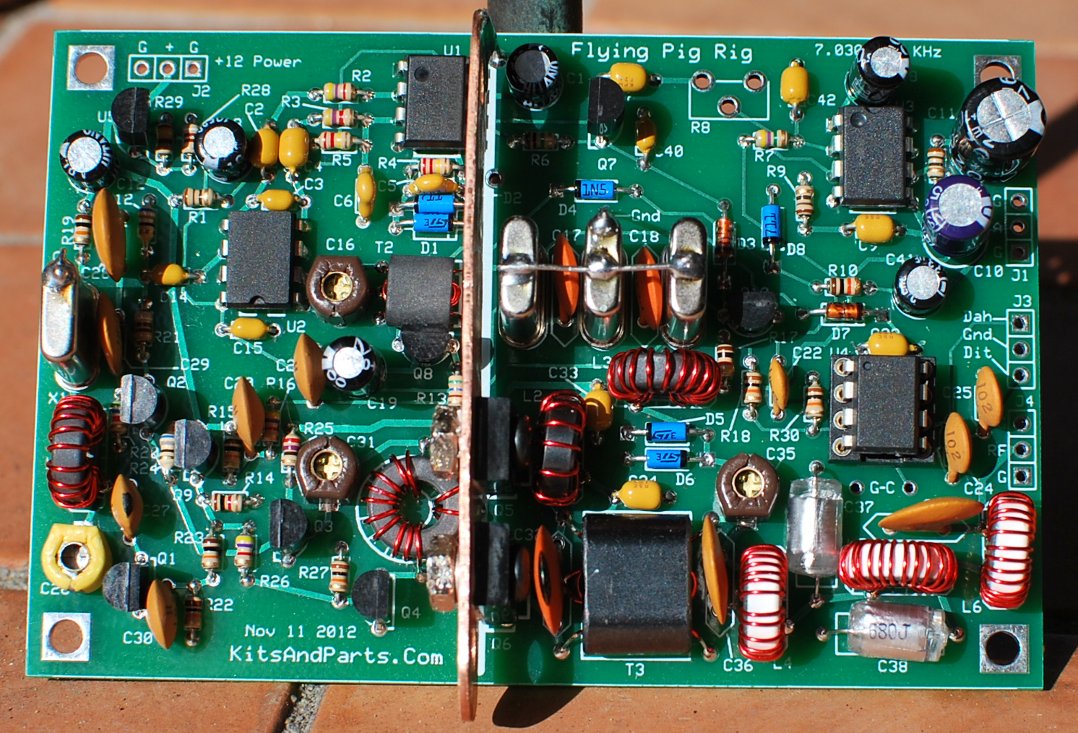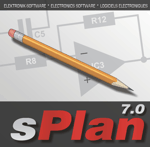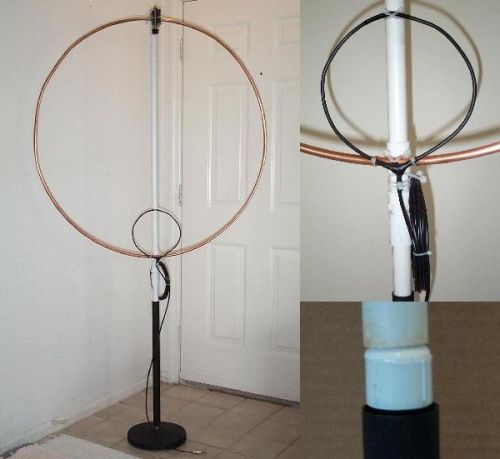Just browsing the Waters and Stanton website and I noticed some nice yagis for 2m. Rather larger than I could ever consider as the one I was viewing would stretch over my garden and the next two, HI.
.......and then I saw the price.
The 22-element yagi from InnovAntennas (see 22-LFA2-144 22 element 144MHz LFA2 Yagi 3kW (17.001m long) 18.55dBi gain) is a whopping £605.95 !!! Probably delivery is not included either.
Of course, if you want a moonbounce station you may have to buy several
of these big yagis, phasing harnesses and booms, plus a large AS-EL
rotator, a big tower, low loss cable ....and an expensive rig. This soon looks like a hobby for the seriously rich only.
Now I've no doubt whatsoever this is an excellent antenna that is well designed and optimised, but it is just 20 odd pieces of aluminium, plus a few insulators, nuts and bolts in the last analysis. OK design costs have to be recovered, but the mark-up is a conservative ten times, if not more, on the raw material prices. Is this justified?
We are all different and I am not judging what others should do with their hard earned cash, but it's just not amateur radio (in my view, others will disagree) when you have to pay silly money for rigs, antennas and accessories.
10 Dec 2012
UK NoV changes
OFCOM has announced some intended changes to the Notice of Variations issued to some radio amateurs in the UK. See http://licensing.ofcom.org.uk/radiocommunication-licences/amateur-radio/full-licence-jan-2013/ . The main changes are to the 5MHz band (more fixed frequencies), the removal of 501-504kHz NoVs and the release, by new NoV application, to the new 472-479kHz band. Changes are expected to come into force from Jan 1st 2013. Details of how to obtain the new NoVs has not yet (to my knowledge) been made known.
Labels:
472-479khz,
500kHz,
5mhz,
ofcom
9 Dec 2012
Batteries by Royal Mail - some change to rules
Some changes are about to come into force which will affect what can be sent by Royal Mail. It would appear that some rules are being relaxed whereas others are being made more strict and this could have an effect on sending certain items, such as lithium batteries, via Royal Mail.
Steve G1KQH sent me this which he received from Battery Force, a battery supplier:
Steve G1KQH sent me this which he received from Battery Force, a battery supplier:
"From the 10th of January 2013 due to legislation outside our control,
Battery Force will no longer be able to send Lithium batteries using
Royal Mail Post. All Lithium batteries sent after this date, will have
to go by courier. Using couriers will unfortunately increase the
delivery charge for lithium batteries."
The Royal Mail website attempts to clarify the rules here:
At the moment I'm not clear what the implications will be. It does sound a little like "job's worth" and health and safety gone mad although, like all such moves, the intention is good: to make the mail service safer. But before long we will not be allowed to walk across a road because of the danger.
How did we manage in years gone by?
Labels:
batteries,
lithium battery,
royal mail
Miracle Antenna products
Although not the world's best performing antennas, the Miracle Whip and its associated variations have their uses when one is looking for a compact and easily tuned antenna for field use. On the higher HF bands the loss compared with a full 1/4 wave is less than might be expected if a decent counterpoise is used (1-2 S points down only).
Recently the Canadian owner, Robert, sadly died after a year or so of health problems. There were some doubts whether or not the company would continue, but it appears it will. Perrin VK3XPT made enquiries about the availability of one of their products, the Miracle Ducker and reported as follows to the Miracle Whip Yahoo Group:
Recently the Canadian owner, Robert, sadly died after a year or so of health problems. There were some doubts whether or not the company would continue, but it appears it will. Perrin VK3XPT made enquiries about the availability of one of their products, the Miracle Ducker and reported as follows to the Miracle Whip Yahoo Group:
UPDATE:
Here is the current status of Miracle Whip stock, globally. I hope this will help someone else here on the group!
- Miracle Antenna do not have any new stock of the Miracle Ducker range. They are waiting on some parts to arrive in the next couple of weeks, which enable them to complete a shipment of new Miracle Ducker TL that they will be sending to Hamcity. This looks to be the only shipment that will be made to any dealer for some time.
- WSPLC.com appear to have some stock, and I have placed an order with them. Fingers crossed that their website is up to date, and showing correct stock levels.
- I have contacted all (yes, all) other Miracle Antenna dealers, and even though some websites are showing stock, this is not actually the case!
So, if you want a Miracle Ducker TL any time soon, Hamcity and WSPLC.com look to be our only and best options. I hope this helps and I will keep the group updated on my progress.
73s
Perrin VK3XPT
Labels:
miracle antenna,
miracle ducker,
miracle whip
8 Dec 2012
Walking in Devon
No posts for a few days as I've been away staying with my 68 year old brother in South Devon. I managed a couple of nice walks along the cliffs and lanes in the cold bright winter sunshine. I believe in the Met Office definition of winter starting Dec 1st. The lanes were VERY muddy but Salcombe, my home town in my childhood was quiet and beautiful.
My Ventus G730 GPS tracker - available for around £34 from Martin Lynch - plotted the 2 walks. One was around 14km and the other 16.5km.
This shot is of the coastal path near Thurlestone. There are a few nice seats on the walk and I have worked some good HF and VHF pedestrian portable DX from them, although I took no radio gear this time.
 |
| My 2 Devon walks plotted using the G730 GPS tracker |
This shot is of the coastal path near Thurlestone. There are a few nice seats on the walk and I have worked some good HF and VHF pedestrian portable DX from them, although I took no radio gear this time.
Labels:
devon,
gps,
martin lynch,
thurlestone,
ventus g730
3 Dec 2012
Long-term Solar Outlook - downwards!
Chris N7ZWY has put an interesting graph on his website showing his predictions for the future solar cycle progression. His graph shows the solar cycle progressions since the 17th century and Chris's predictions for the future. No-one can be certain of the accuracy of predictions, but as time goes by we are gathering more detailed understanding. I have little doubt Chris is broadly right.
Chris says:
Now, looking at the plot it is highly likely that the sunspot peaks for the next 40-50 years will be weak ones, or even non-existent. The next few years are likely to see the end of the good times on the higher HF bands. Those of us who were around in the 1950s and 1960s didn't know just how lucky we were. Many newcomers to the hobby at that time worked all over the world with 5-10W of CW and AM with S9 signals.
Chris says:
"The average sunspot count for October was 61.4, higher than last month and no indication of the final decline which should bottom out around 2017 or 2018, which will then be followed by two more similarly low sunspot cycles and then a third with almost no activity during a phase reversal."See http://www.home.earthlink.net/~christrask/Solar%20Activity%201600-2100.pdf
Now, looking at the plot it is highly likely that the sunspot peaks for the next 40-50 years will be weak ones, or even non-existent. The next few years are likely to see the end of the good times on the higher HF bands. Those of us who were around in the 1950s and 1960s didn't know just how lucky we were. Many newcomers to the hobby at that time worked all over the world with 5-10W of CW and AM with S9 signals.
Labels:
chris trask,
n7zwy,
solar cycle,
sunspot
Flying Pig 40m 5W transceiver
Thanks to Dave in Jakarta (don't know your call Dave) I've been pointed towards the Flying Pig 5W CW transceiver for 40m from Kits and Parts.
The receiver uses a clever direct conversion design using an NE602 with some AGC applied to it. Like the RockMite, it uses some front end crystal filtering to help overcome dynamic range/overload issues, but with the limitation this is a single frequency radio, for example parked on 7.030MHz, the QRP frequency. Still, a full 5W on the QRP frequency will permit plenty of QSOs.
The best news is the price - $40 only, which is good value for a kit. Available from Dec 10th 2012 according to the website.
The receiver uses a clever direct conversion design using an NE602 with some AGC applied to it. Like the RockMite, it uses some front end crystal filtering to help overcome dynamic range/overload issues, but with the limitation this is a single frequency radio, for example parked on 7.030MHz, the QRP frequency. Still, a full 5W on the QRP frequency will permit plenty of QSOs.
 |
| This is the photo on the http://www.kitsandparts.com/ website |
Labels:
40m,
flying pig,
kits and parts
2 Dec 2012
Drawing schematic diagrams
 Several people have asked me what I use to produce schematic diagrams for circuits I put on my website and here on the blog. Well I use a package called sPlan which is available from http://www.abacom-online.de/uk/html/splan.html. This is the package that many SPRAT authors use. Mine is an early version but the latest version is available for 39.9 euros.
Several people have asked me what I use to produce schematic diagrams for circuits I put on my website and here on the blog. Well I use a package called sPlan which is available from http://www.abacom-online.de/uk/html/splan.html. This is the package that many SPRAT authors use. Mine is an early version but the latest version is available for 39.9 euros.The Abacom website gives details of distributors in many countries.
Wikipedia
 |
| en.wikipedia.org/ |
As they say in their thank you email, the resource is used by people from all over the world including in schools in developing countries. By ensuring Wikipedia remains free and neutral we are helping to keep the Internet free for future generations.
Labels:
wikipedia
Magnetic loop HF TX antennas
Although I have successfully used a large 80m sq vertical wire loop (made with 32 x 0.2mm PVC covered wire) on both 137 and 500kHz, I have never tried a hi-Q small loop on HF transmit. There is a very useful calculator available at http://www.66pacific.com/calculators/small_tx_loop_calc.aspx which suggests a 3m circumference loop using a 5mm diameter conductor - for example small bore copper pipe or a thick coax cable - would have a loss of only 0.9dBd and a bandwidth of 352kHz at 28MHz. This would comfortably cover both 28MHz CW, data, WSPR and beacons without retuning.
An advantage of magnetic loop antennas is reduced detuning from nearby objects so this antenna, if mounted in the loft space, might make a neat and efficient stealth antenna for 10m. I guess one could even arrange to switch the tuning capacitor remotely so that several sub-bands could be covered. When using QRP power levels, as I do, the high voltages and currents that are encountered in small loops are less problematic. For example, choice of variable or fixed tuning capacitors is less onerous than if using 100W.
KR1ST has some nice information on magnetic loop antennas on his website. I hope he doesn't mind me linking to the image of his magnetic loop on his site. There is also some useful loop information on the Wikipedia site.
In all, I think I'm missing out (so far) on a whole range of antenna experiments!
An advantage of magnetic loop antennas is reduced detuning from nearby objects so this antenna, if mounted in the loft space, might make a neat and efficient stealth antenna for 10m. I guess one could even arrange to switch the tuning capacitor remotely so that several sub-bands could be covered. When using QRP power levels, as I do, the high voltages and currents that are encountered in small loops are less problematic. For example, choice of variable or fixed tuning capacitors is less onerous than if using 100W.
 |
| http://www.kr1st.com/magloop.htm |
In all, I think I'm missing out (so far) on a whole range of antenna experiments!
Labels:
transmit loop
Subscribe to:
Comments (Atom)





